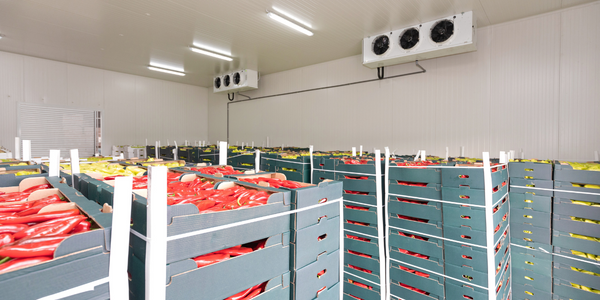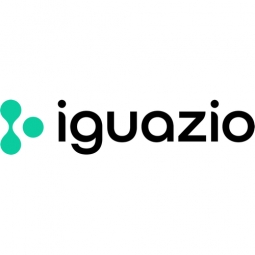Download PDF
HCI’s Journey to MLOps Efficiency: A Case Study
Technology Category
- Analytics & Modeling - Data Mining
- Analytics & Modeling - Machine Learning
Applicable Industries
- Mining
- Transportation
Applicable Functions
- Logistics & Transportation
- Maintenance
Use Cases
- Last Mile Delivery
- Time Sensitive Networking
Services
- Testing & Certification
- Training
The Challenge
Home Credit International (HCI), a global consumer financial provider, recognized the potential of Machine Learning (ML) models in financial institutions, particularly in risk-related use cases. However, they faced challenges in deploying ML models efficiently. The time to delivery was long and access to data was limited. HCI’s internal research revealed that nearly 80% of the time spent on data science-related tasks was dedicated to collecting datasets and cleaning and organizing the data, leaving only about 20% of the time for core tasks like building training sets, mining data, and refining algorithms. In 2021, the average delivery time of an AI initiative, from prototype to production, was more than seven months. The biggest blocker for more efficient use of AI/ML was access to data, followed by the need for a proper AI/ML environment.
About The Customer
Home Credit International (HCI) is a global consumer financial provider. As leaders in their space, they identified the potential of Machine Learning (ML) models in financial institutions, particularly in risk-related use cases. Some of the top use cases include campaign management, generating offers, risk-based pricing, next best offer (cross selling) with the prediction of the next best offer, next best offer with the ability to decrease insurance-based risks, penalties when servicing products, payment behavior, calendars and promise to pay during collection processes, anti-fraud to protect clients, and creating a client behavioral profile based on predictions from data mining.
The Solution
HCI identified four key areas to improve ML delivery and deployment efficiency: Access to Data, Automation, Performance, and Knowledge sharing and support. They built a data strategy using structured, semi-structured, and unstructured data, as well as federated and virtual data. They created a proper environment through automated building, training, and monitoring and operational efficiency. They also focused on creating a proper environment through elasticity, serverless, and a hybrid solution. HCI improved time to delivery through integrations, standardization and sharing, and automation. Operational efficiency was achieved by using both on-premises and the public cloud and implementing solutions for hardware, file systems, maintenance support, enterprise security, and data management. Elasticity was achieved through zero downtime, auto-scaling, using easy current Python code scaling, and the support of complex event processes. HCI also used open source MLRun, an MLOps orchestration framework for accelerating ML pipelines, which comprises four main components: The Feature Store, The Real Time Serving Pipeline, Monitoring and Retraining, and CI/CD for ML.
Operational Impact
Quantitative Benefit
Related Case Studies.

Case Study
Airport SCADA Systems Improve Service Levels
Modern airports are one of the busiest environments on Earth and rely on process automation equipment to ensure service operators achieve their KPIs. Increasingly airport SCADA systems are being used to control all aspects of the operation and associated facilities. This is because unplanned system downtime can cost dearly, both in terms of reduced revenues and the associated loss of customer satisfaction due to inevitable travel inconvenience and disruption.

Case Study
IoT-based Fleet Intelligence Innovation
Speed to market is precious for DRVR, a rapidly growing start-up company. With a business model dependent on reliable mobile data, managers were spending their lives trying to negotiate data roaming deals with mobile network operators in different countries. And, even then, service quality was a constant concern.

Case Study
Digitize Railway with Deutsche Bahn
To reduce maintenance costs and delay-causing failures for Deutsche Bahn. They need manual measurements by a position measurement system based on custom-made MEMS sensor clusters, which allow autonomous and continuous monitoring with wireless data transmission and long battery. They were looking for data pre-processing solution in the sensor and machine learning algorithms in the cloud so as to detect critical wear.

Case Study
Cold Chain Transportation and Refrigerated Fleet Management System
1) Create a digital connected transportation solution to retrofit cold chain trailers with real-time tracking and controls. 2) Prevent multi-million dollar losses due to theft or spoilage. 3) Deliver a digital chain-of-custody solution for door to door load monitoring and security. 4) Provide a trusted multi-fleet solution in a single application with granular data and access controls.

Case Study
Vehicle Fleet Analytics
Organizations frequently implement a maintenance strategy for their fleets of vehicles using a combination of time and usage based maintenance schedules. While effective as a whole, time and usage based schedules do not take into account driving patterns, environmental factors, and sensors currently deployed within the vehicle measuring crank voltage, ignition voltage, and acceleration, all of which have a significant influence on the overall health of the vehicle.In a typical fleet, a large percentage of road calls are related to electrical failure, with battery failure being a common cause. Battery failures result in unmet service agreement levels and costly re-adjustment of scheduled to provide replacement vehicles. To reduce the impact of unplanned maintenance, the transportation logistics company was interested in a trial of C3 Vehicle Fleet Analytics.

Case Study
3M Gains Real-Time Insight with Cloud Solution
The company has a long track record of innovative technology solutions. For example, 3M helps its customers optimize parking operations by automating fee collection and other processes. To improve support for this rapidly expanding segment, 3M needed to automate its own data collection and reporting. The company had recently purchased the assets of parking, tolling, and automatic license plate reader businesses, and required better insight into these acquisitions. Chad Reed, Global Business Manager for 3M Parking Systems, says, “With thousands of installations across the world, we couldn’t keep track of our software and hardware deployments, which made it difficult to understand our market penetration.” 3M wanted a tracking application that sales staff could use to get real-time information about the type and location of 3M products in parking lots and garages. So that it could be used on-site with potential customers, the solution would have to provide access to data anytime, anywhere, and from an array of mobile devices. Jason Fox, Mobile Application Architect at 3M, upped the ante by volunteering to deliver the new app in one weekend. For Fox and his team, these requirements meant turning to the cloud instead of an on-premises datacenter. “My first thought was to go directly to the cloud because we needed to provide access not only to our salespeople, but to resellers who didn’t have access to our internal network,” says Fox. “The cloud just seemed like a logical choice.”





